Introduction
As urbanization accelerates across the globe, cities are increasingly faced with the dual challenges of maintaining air quality and ensuring the well-being of vulnerable populations.In Nanjing, China, renowned for its rich history and rapid modernization, these challenges are notably pronounced in the context of elderly care centres, where the elderly are more susceptible to air pollution-related health issues. This article explores the pivotal role that roadside green infrastructure—consisting of trees, shrubs, and other vegetation—plays in mitigating air pollution and enhancing the living conditions of elderly residents in these facilities. Drawing on emerging research and case studies, we will examine how strategically integrating green spaces into urban planning not only helps purify the air but also fosters a healthier, more sustainable habitat for some of the city’s most at-risk inhabitants. As Nanjing continues to evolve, understanding and implementing effective green infrastructure could serve as a crucial strategy in safeguarding public health and promoting quality of life for its senior citizens.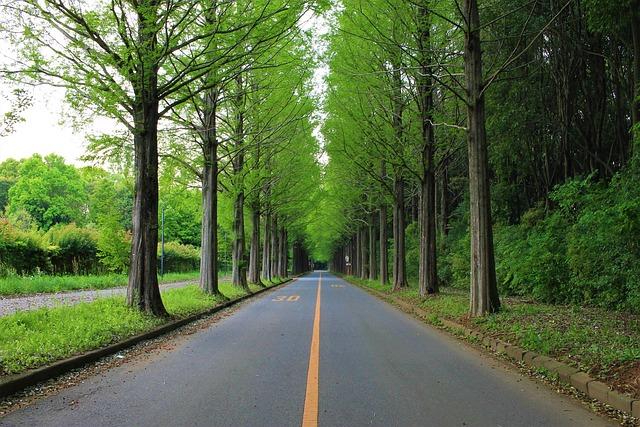
The Impact of Roadside Green Infrastructure on Air Quality Around Elderly Care Centres
the integration of roadside green infrastructure has emerged as a pivotal strategy in the quest to enhance air quality, particularly around elderly care centres. urban vegetation, such as trees and shrubs, plays a crucial role in filtering air pollutants and providing a sanctuary for local biodiversity. Key benefits include:
- Pollutant Absorption: Plants are known to absorb notable amounts of carbon monoxide, sulfur dioxide, and particulate matter, which are particularly harmful to vulnerable populations, including the elderly.
- Microclimate Regulation: Green infrastructure contributes to lowering ambient temperatures, helping to mitigate heat stress and improve overall comfort for residents and visitors alike.
- Noise Reduction: Dense vegetation can act as a natural sound barrier, thereby reducing noise pollution, which is essential for the well-being of elderly individuals sensitive to sound disturbances.
studies conducted in Nanjing illustrate a tangible improvement in air quality metrics in areas surrounding elderly care facilities enhanced with greenery. A comparative analysis of air quality indices before and after the implementation of these green zones demonstrates marked reductions in key harmful pollutants. The following table summarizes the observed improvements:
| Pollutant | Before Green Infrastructure | After Green Infrastructure |
|---|---|---|
| PM2.5 (µg/m³) | 55 | 30 |
| NO2 (µg/m³) | 40 | 20 |
| Ozone (µg/m³) | 80 | 60 |
This data underscores the positive correlation between the development of green infrastructure and the enhancement of urban air quality, particularly in regions that cater to the elderly. By creating healthier living environments through strategic vegetation initiatives, cities can substantially improve the quality of life for one of their most vulnerable populations.
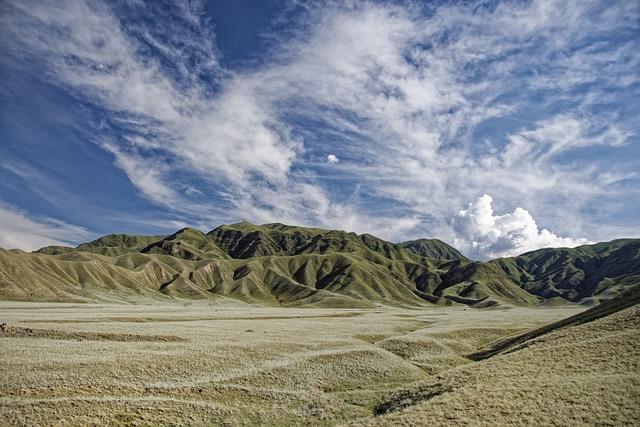
Analyzing Air Pollution Sources and Their Effects on Elderly Health in Nanjing
Urban air pollution poses a significant threat to public health,particularly for vulnerable populations such as the elderly. In Nanjing, a city known for its rapid industrial growth and dense traffic, the correlation between air quality and health outcomes for senior citizens has become increasingly evident. Factors contributing to elevated pollution levels include:
- Traffic Emissions: Heavy vehicles and constant congestion release harmful pollutants such as nitrogen dioxide (NO2) and particulate matter (PM2.5).
- Industrial Discharge: Nearby factories contribute to a cocktail of toxins, aggravating respiratory issues among the elderly.
- Construction Activities: dust and emissions from ongoing construction sites can significantly affect air quality.
Elderly individuals exposed to these pollutants are at a higher risk of developing chronic diseases,including cardiovascular and pulmonary conditions. Studies have demonstrated that elevated levels of air pollution can lead to increased hospital admissions and mortality rates in this demographic. The integration of green infrastructure in proximity to elderly care centers presents a viable method to mitigate these adverse effects. Strategies such as:
- Planting Vegetation: Urban trees and gardens can act as natural air filters, absorbing pollutants and improving air quality.
- Green Roofs: Implementing green roofs on care facilities can reduce the heat island effect and lower contamination levels.
- Vegetative Barriers: Utilizing shrubs and trees as barriers along busy roadways can reduce the direct exposure of residents to vehicular emissions.
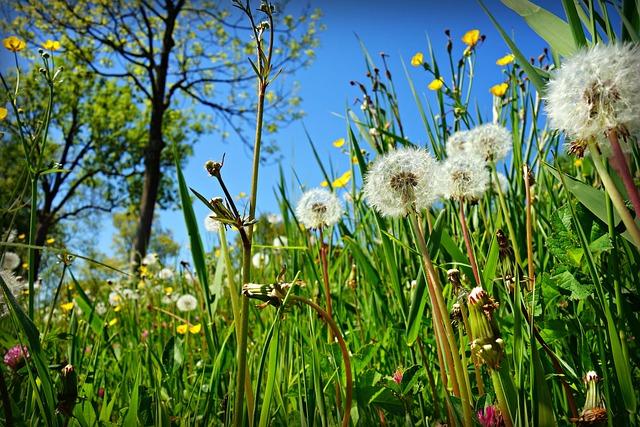
Design Strategies for Effective Green Infrastructure Implementation
Implementing effective green infrastructure in urban settings requires careful consideration of design strategies that address both ecological benefits and community needs. In the context of elderly care centers, integrating features such as vegetative barriers and biofiltration systems proves beneficial in filtering air pollutants while providing visual and psychological comfort to residents. When planning these installations, it’s essential to focus on aspects such as:
- Plant Selection: Choose native species that are resilient, require minimal maintenance, and possess high air filtration capabilities.
- Location: Position green infrastructure elements strategically near care centers to maximize exposure for residents and minimize pollution ingress.
- Accessibility: Ensure areas are easily accessible for elderly individuals, incorporating seating, walkways, and sensory plants that promote engagement.
In addition to environmental enhancements,community involvement in the design process can foster a sense of ownership and duty. Collaborative efforts between city planners, ecologists, and local communities can lead to more sustainable and effective outcomes. some practical tools to facilitate this cooperation may include:
| Tool | Description |
|---|---|
| Workshops | Engage community members in education about the benefits of green infrastructure. |
| Feedback Forums | Gather input from residents to inform future green space designs and improve air quality. |
| Monitoring Programs | Implement systems to track environmental improvements and community satisfaction over time. |

Community engagement and Education in Enhancing Green Initiatives
Enhancing community engagement and education is pivotal in fostering green initiatives that directly impact air quality, especially in areas surrounding elderly care facilities. By raising awareness and promoting involvement among residents, local governments can definitely help cultivate a sense of ownership over public green spaces. Workshops and seminars can be organized, focusing on topics such as urban gardening, the benefits of native plants, and sustainable practices. These educational programs empower community members to actively participate in maintaining and enhancing roadside green infrastructure,which in turn contributes to cleaner air and a healthier environment for vulnerable populations.
Moreover, collaboration with schools, NGOs, and local businesses can amplify these efforts. Community planting days and educational campaigns can serve as practical avenues for residents to engage with their environment. An essential aspect of this initiative is the cultivation of knowledge regarding the benefits of greenery, including its role in reducing air pollutants and noise. Local governments can facilitate this exchange by providing platforms for discussions,sharing case studies,and developing informative materials that highlight the positive impacts of green spaces. The following table outlines potential community initiatives and their corresponding benefits:
| Initiative | Benefits |
|---|---|
| Community Planting Events | Fosters community spirit and enhances local biodiversity |
| educational Workshops | Increases awareness of environmental issues and sustainable practices |
| Collaborative Gardening | Builds social connections and promotes resilience among elderly care residents |

Policy Recommendations for Integrating Green Infrastructure in Urban Planning
To effectively incorporate green infrastructure into urban planning, it is essential to develop a extensive policy framework that addresses multi-dimensional environmental, social, and economic aspects. Policymakers should prioritize collaboration between government agencies, local communities, and environmental organizations to create guidelines that support sustainable practices. This can include:
- Incentivizing green roof initiatives and vertical gardens in urban buildings.
- Establishing dedicated funding for ongoing maintenance and development of roadside green spaces.
- Implementing zoning regulations that promote the integration of parks and vegetation into residential and commercial areas.
- Encouraging community engagement in project planning to ensure alignment with local needs and values.
Moreover, it is vital to integrate monitoring and evaluation systems to assess the effectiveness of green infrastructure projects over time. Utilizing data analytics can aid in understanding the impact on air quality, public health, and overall urban livability. Local governments could benefit from adopting a performance-based approach, which involves:
| Initiative | Expected Outcome |
|---|---|
| Air Quality Monitoring stations | Track pollutants in real-time |
| Community Workshops | Enhance public awareness and involvement |
| Partnerships with Educational Institutions | Research-driven approaches to urban design |
By prioritizing these actions, cities can establish environments that are not only healthier but also more resilient to climate change, directly impacting vulnerable populations such as those living near elderly care centers.
Future Research Directions for sustainable Urban Air Quality Management
The investigation of roadside green infrastructure presents a compelling area for further exploration, particularly in urban centers like Nanjing, where air quality is increasingly compromised. Future studies should focus on a variety of innovative green solutions, such as green walls, vertical gardens, and biofiltration systems, to determine their effectiveness in mitigating air pollutants. Research can be enriched through the integration of environmental monitoring technologies that assess real-time changes in air quality metrics. these technologies can offer valuable data to evaluate the direct influence of greenery on air composition surrounding elderly care facilities.
Moreover, collaborative efforts among urban planners, environmental scientists, and social stakeholders are essential to optimizing the implementation of green infrastructure. Research should prioritize community engagement to ensure local needs and preferences are addressed, fostering a sense of ownership and responsibility towards these initiatives. Additionally, future studies could benefit from comparative analyses of various urban layouts and demographic factors that influence the effectiveness of green solutions, helping to create tailored strategies that enhance both air quality and the well-being of residents. The following table summarizes potential research areas:
| Research Focus | Description |
|---|---|
| Impact Assessment | Evaluate the effectiveness of various green infrastructures in reducing pollutants. |
| Technology Integration | Utilize real-time monitoring systems to gauge air quality improvements. |
| Community Engagement | Involve local residents in green projects to understand and meet their needs. |
| Comparative Studies | Analyze different urban environments to identify best practices for air quality management. |
Insights and Conclusions
the integration of roadside green infrastructure presents a promising solution to enhance air quality, particularly in and around elderly care centers in Nanjing, China. By strategically implementing green elements such as trees, shrubs, and vegetation, urban planners and policymakers can significantly mitigate harmful air pollutants, creating healthier environments for one of the most vulnerable populations. As Nanjing continues to grapple with urbanization and its associated environmental challenges, the findings highlighted in this article underscore the urgent need for innovative approaches to urban design that prioritize both ecological sustainability and public health. By investing in green infrastructure, Nanjing has the prospect to not only protect its elderly residents but also to set a precedent for other cities facing similar air quality issues. A concerted effort to incorporate nature into urban landscapes may very well lead to a transformation in the health and well-being of communities across China.



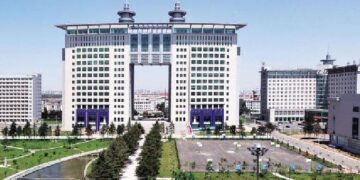


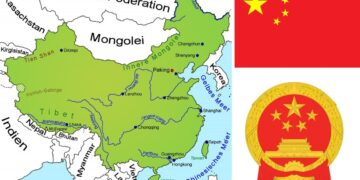








How Trump’s Tariffs Transformed a Mexican Businessman into a Grateful Ally